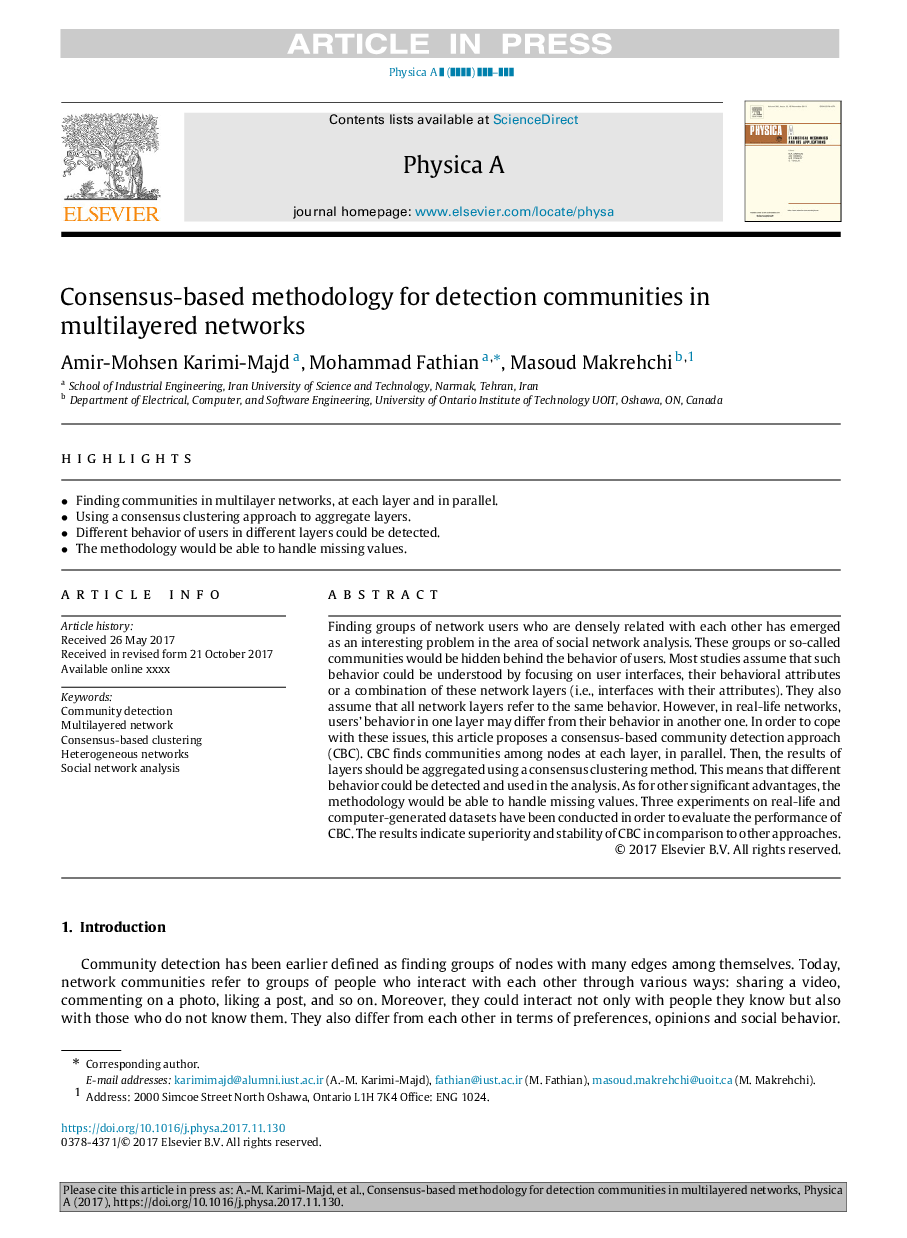| Article ID | Journal | Published Year | Pages | File Type |
|---|---|---|---|---|
| 7376185 | Physica A: Statistical Mechanics and its Applications | 2018 | 12 Pages |
Abstract
Finding groups of network users who are densely related with each other has emerged as an interesting problem in the area of social network analysis. These groups or so-called communities would be hidden behind the behavior of users. Most studies assume that such behavior could be understood by focusing on user interfaces, their behavioral attributes or a combination of these network layers (i.e., interfaces with their attributes). They also assume that all network layers refer to the same behavior. However, in real-life networks, users' behavior in one layer may differ from their behavior in another one. In order to cope with these issues, this article proposes a consensus-based community detection approach (CBC). CBC finds communities among nodes at each layer, in parallel. Then, the results of layers should be aggregated using a consensus clustering method. This means that different behavior could be detected and used in the analysis. As for other significant advantages, the methodology would be able to handle missing values. Three experiments on real-life and computer-generated datasets have been conducted in order to evaluate the performance of CBC. The results indicate superiority and stability of CBC in comparison to other approaches.
Related Topics
Physical Sciences and Engineering
Mathematics
Mathematical Physics
Authors
Amir-Mohsen Karimi-Majd, Mohammad Fathian, Masoud Makrehchi,
